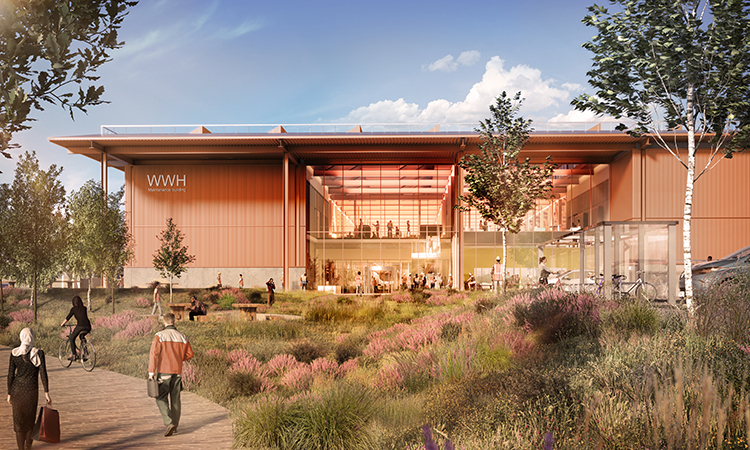HS2 given planning approval for Washwood Heath Depot near Birmingham
Posted: 2 February 2023 | Elliot Robinson (Editorial Assistant - Global Railway Review) | No comments yet
HS2 has been granted Schedule 17 approval by Birmingham City Council for Washwood Heath Depot, the maintenance facility and main control centre for the whole HS2 network.


Credit: HS2
Birmingham City Council has granted Schedule 17 approval, under the HS2 Phase One Act 2017, for HS2’s Washwood Heath Depot. This is where HS2 trains will be maintained, serviced, and stored when not in use, and includes the Maintenance Building, Network Integrated Control Centre (NICC) and Cleaners and Drivers Building.
All the buildings have been designed to celebrate engineering and provide sustainable working, as well as outdoor amenity spaces for staff. The designs have been produced by HS2’s Engineering Delivery Partner (EDP).
“We’re pleased that Birmingham City Council’s planning committee has approved our plans for the HS2 depot at Washwood Heath, marking a significant milestone for HS2 in the Midlands,” Richard Kirkham, Light Systems Programme Client for HS2, said. “Over 550 jobs will be created by the Depot’s operations in a range of disciplines including facilities management, fleet management, production, depot drivers and cleaning. We’re working closely with Birmingham City Council and other stakeholders to maximise these job opportunities for people in the local area.”
“Good functional design has been a vital part of developing the plans for the Depot, including ensuring this new large-scale facility contributes to improving a significant area on the outskirts of Birmingham, and streamlining operations for the railway,” Kay Hughes, Design Director for HS2, said. “Our design team have worked closely with the Council to make sure we deliver the right design for the local area, which we can all be proud of.”
“The Washwood Heath Depot is a true asset for the region, bringing the heart of the HS2 network to Birmingham,” Alan McCartney, Partner at Glenn Howells Architects, said. “Investment in job creation and aspirational standards of sustainable design have guided the development of the architecture and integrated railway infrastructure. Elegant industrial buildings are set within a heathland landscape with staff safety, wellness, and operational efficiency at the core of each building’s design.”
Related content you will enjoy:
Video: HS2 celebrates tunnels reaching halfway point under the Chilterns
The Maintenance Building will be the primary hub of operations within the site, used to maintain the HS2 train fleet along with facilities to store materials and equipment. It includes office accommodation, workshops, and staff welfare facilities. Around 250 staff will work in the building, including facilities management, fleet management, production, cleaning, and depot drivers.
The Network Integrated Control Centre will oversee the whole HS2 network and is located centrally within the Washwood Heath depot site. This will be a standalone building, designed to accommodate the operational and management functions of the HS2 network. Over 100 staff will be based here.
The Cleaners and Drivers Building is located in the depot’s western area and will host facilities for train servicing teams and driver training. This building will be linked to the stabling yard area, where trains will be cleaned and replenished, ready for passenger service. Around 200 staff will be based here.
The Stabling Yard area is located towards the west side of the depot site and will be where the trains are parked whilst not in operation.
Design of the buildings
The design of the buildings provides for a high level of controlled, natural lighting and reduces the need for artificial lighting during the daytime. Solar roof panels, reusing rainwater runoff from some of the building roofs, sustainable drainage, renewable energy, low carbon materials and intelligent lighting provide additional environmental benefits during construction and operation.
Accessibility for pedestrians and cyclists has been incorporated into the design, with dedicated pedestrian and cyclist routes connecting with Birmingham’s future transport network. In addition to car parks, provision is included for electric vehicle charging points, cycle and motorcycle parking for staff and visitors, and parking for individuals with limited mobility at all depot facilities, alongside taxi and delivery vehicle drop off zones.
Work on site to date includes demolition of buildings and groundworks to prepare the site for the construction of the new Depot and Control Centre.
Related topics
Depots & Shunting Yards, Regulation & Legislation, Track/Infrastructure Maintenance & Engineering








